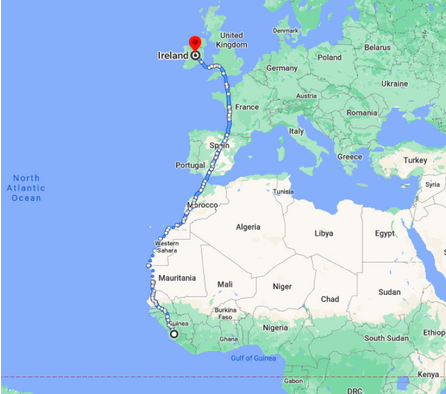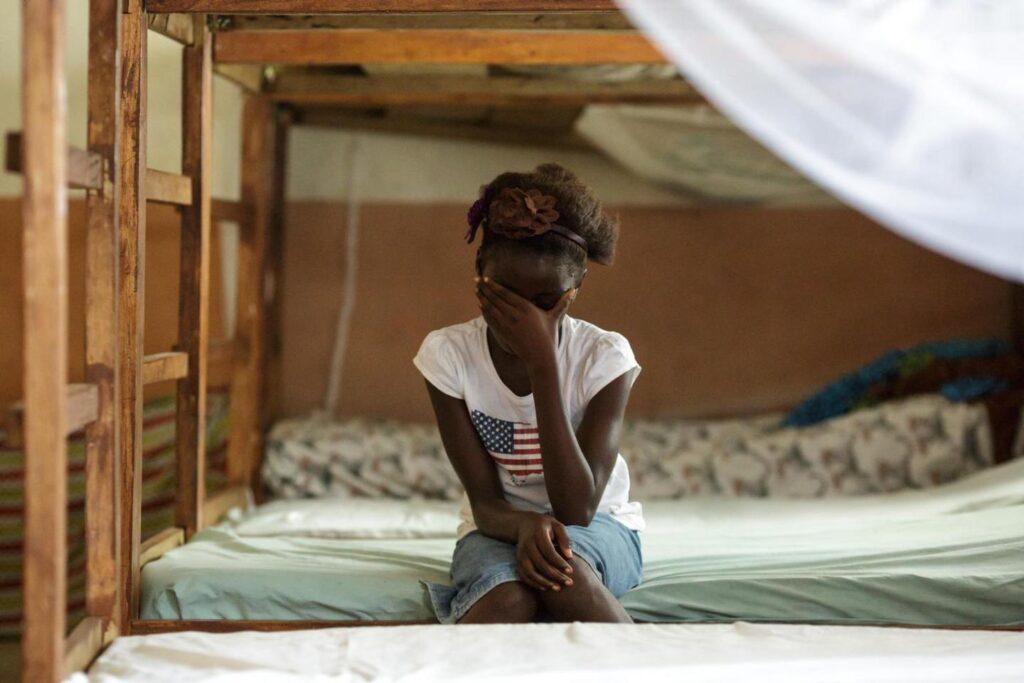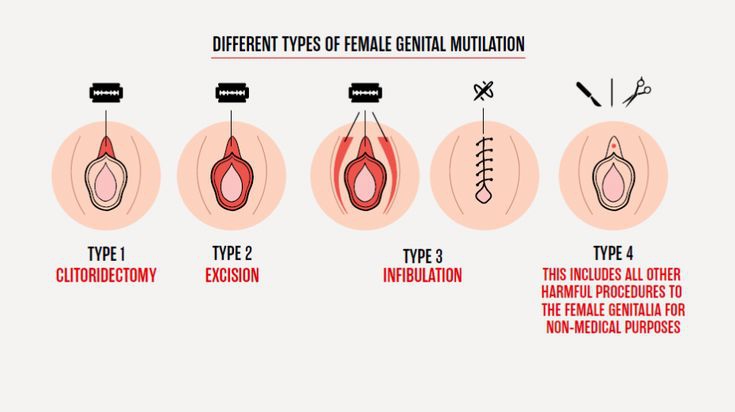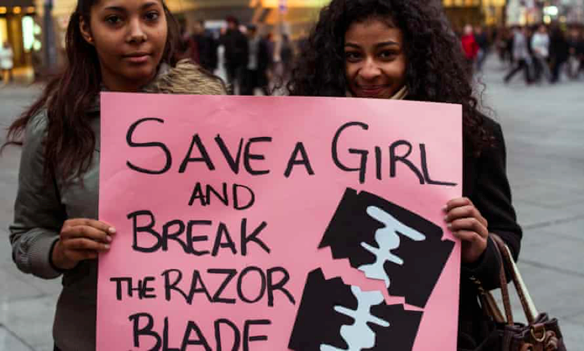The Story of Female Genital Mutilation in Sierra Leone
Sierra Leone ranked 114/135 countries in gender gap rankings (WHO 2011).
Many girls do not get to finish their schooling. They must leave school to help on the farm, sell produce at market, and get married.
Girls and women are forced to adhere to cultural practice and undergo Forced Genital Mutilation (FGM).
These circumstances are cause for some girls and women to choose to leave their homes and families and embark on a journey of forced migration.
This is one woman’s story of life in her village in Sierra Leone and her journey to Ireland. Her story is one of many.

She’s from a village in Sierra Leone, West Africa. The main language spoken is Krio. It is a small community, run by chiefs. The chiefs are like big city ministers who settle problems and quarrels in the community.
There is a mosque and a church in the community. There are 2 primary schools and 3 secondary schools. People are friendly. They like to get together and socialize.
It is a farming community. Daily life is dictated by the rainy and dry seasons. Diet is reflective of local crops and produce. They eat a lot of rice and vegetables. She misses the local food.
Things are difficult for girls and young women. Many go to school without proper food or lunch. She would go home to eat a little on breaks between lessons. After school she would help on the farm.
Some girls get married when they are still teenagers. Young women who have given birth carry their baby on their back to go to market. Families force girls to get married young, rather than go to school. This is less of a burden for the family than paying school fees.
School life for girls in her village isn’t easy or guaranteed. She only attended until secondary school. She had to leave school to help on the farm. At schools in her village they would beat students to force them to learn. There was severe punishment for being late. Girls would be impregnated by teachers and have to drop out of school.
Her experience has been different in Ireland. Here girls have more support from family.
She’s been embraced by a lot of different people. Everyone supports her and encourages her education. There aren’t harsh punishments. It’s a more encouraging learning environment. Teachers and students don’t meet up outside of school.
“When girls get to a certain age, they teach you how to be a good wife, have children, be good in bed.” In her village, a group of women known as the Bondo Society come together to facilitate the local practice of FGM and pass on associated teachings to girls and young women. It’s a secret. It’s not really talked about.
It’s treated as a celebration. That is how it is talked about. Not the procedure. Girls are brought to a hut where the procedure is performed. Members of a girl’s family go to the hut in advance to arrange and pay money for FGM. Girls are forced to accept it. Her whole family did it. Her and her sisters did it. If it had been her decision, she would have said no.
Her mother is head of the Bondo Society and is known as Sowei. Her mother performs the FGM procedure. A traditional tool is used for the cutting. There is no pain medication. It’s painful. If there is bleedingthe tool is used to stop the bleeding. There is a sore that is left to heal. Sometimes penicillin is used to help. After, it is painful to pee. Girls that hear this are afraid to pee.

To escape further control over her life and future, she embarked on a difficult but necessary journey. She chose to leave because she was going to have to be married. She was expected to learn to take over her mother as Sowei and did not want this. She has a passion for education and wanted to be able to go to school.
She was afraid to leave because she didn’t know what it would be like where she was going. She and her older brother came together. They came to Ireland on an airplane. Her brother stayed in direct provision. She stayed in a home for underage children.
She is happy with her life here, with the freedom to make her own decisions. She is happy to get to go to school here. She studies and works in accounting.
She misses her family.
She would like to help advocate for girls where she is from, but it’s hard to stop the practice of FGM. There are no regional anti-FGM education and support groups talking about it locally. There are no international organizations in position and helping locally.
The best approach would be for an international organization or government initiative to exist locally and offer an option for girls that don’t want the procedure, but this would be unlikely to completely stop FGM. Many would still do it because their whole family does it. Local chiefs continue to encourage the practice because it has always been done.
Girls need to be able to speak up and stand up for themselves. Young girls being forced to marry is like going into slavery. This makes girls and women lose their confidence. There needs to be more opportunity for girls to say in school and get an education.
What is FGM?
FGM = Female Genital Mutilation It is the term given to the physical operation which involves cutting or altering of female genitalia. It involves total or partial removal of the external genital organs and/or further injury to the genital areas without any medical or therapeutic reasons (WHO, 2016).

There are four classifications of Female Genital Mutilation (FGM)
Type I – This is partial or complete expulsion of the clitoris or potentially the prepuce (clitoridectomy).
Type II – Incomplete or total evacuation of the clitoris and the labia minora, with or without extraction of the labia majora.
Type III – This is the narrowing of the vaginal opening with a production of a covering seal by cutting and situating the labia minora or potentially the labia majora, with or without extraction of the clitoris (infibulation).
Type VI – This includes other harmful procedures to the female genitalia for non-medical purposes, for example, pricking, piercing, incising, scraping, and cauterization.
FGM is performed on girls between 1-17 years old, the norm being at puberty.
Origins and Prevalence of FGM
The practice of FGM originates in Africa, where it is done in 28 countries.
Today, the practice of FGM is still most common in areas of Africa.
It is also done in some parts of the Middle East and Asia.
World wide 100-140 million girls and women have undergone FGM in approximately 40 countries (28 African, some Asian, immigrant populations in western countries).
3 million are at risk of undergoing FGM each year.
6000 girls per day undergo FGM.
15-30% of girls and women who undergo FGM die from bleeding and infections (WHO 2010).
Prevalence of FGM in Sierra Leone
FGM pervasiveness in Sierra Leone is more than 90%
- Northern region – 96.3%
- Southern region – 88.6%
- Rural rate – 92.3%
- Eastern region – 91.3%
- Western region – 75.6%
- Urban rate – 80.7%
In Sierra Leone, 40.2% of women and girls from ages 15 to 49 who have encountered FGM, went through the procedure between the ages 10 and 14.
In a 2012 published study of 310 girls between 10-20 years old, 61% had undergone FGM. The average age FGM took place was 7.7 years old.
Cultural Beliefs / Reasons for FGM
It is seen as a fertility rite that causes enhanced fertility.
It is believed to prevent birth trauma by removing the clitoris, which is thought to contain poison that will harm the baby during childbirth.
The Clitoris is thought to be dirty and evil.FGM is believed to deter sexual deviancy, nymphomania, and prostitution. It is believed that FGM will ensure virginity and chastity.
It is believed that the clitoris causes male impotence.FGM causes greater male sexual satisfaction. It makes the woman easier to penetrate.
FGM ensures male control and dominance.It is believed to ensure a woman’s loyalty to her husband. Upon marriage, if a husband finds a woman has not undergone FGM, he will pay for her to go through the initiation.
FGM is rooted in maintaining social and political control over women. FGM is driven by community pressure to conform to traditional cultural practice.
FGM increases women’s social value and acceptance. Women who undergo FGM are more respected in community than those who do not. It is tied to social status. 27% of women and 21% of men believe FGM to show family status.
FGM is tied to wealth status. In Sierra Leone it ranges from 200,00 to 600,00 Leones. A family able to pay to have young women initiated demonstrate they are financially capable.Women who undergo FGM have increased marriage prospects.
FGM is a Cultural and Religious rite of passage. Religious/cultural interpretations that incorporate a belief in FGM predominant in branches of the Muslim faith, but also some Christian, Jewish, and Indigenous belief systems.

It is an ancient tradition in many parts of Africa.It is an initiation and rite of passage into womanhood/adulthood.
FGM is tied to ideas of cleanliness and hygiene. It is thought to prevent foul smelling secretion.
It is believed to increase a woman’s femininity. It is tied to standards of beauty and aesthetics by improving the appearance of genitalia.
It is believed that FGM causes increased female sexual satisfaction and more by diverting attention from the clitoris to the vaginal channel and G-spot.
Bondo Society
The Bondo is a powerful all-woman led secret society. Bondo is also known as Sande in other parts of West Africa.The societies have existed for many years in the practice of ancient cultural activities, including FGM.
Societies are organized by ethnic groups and run by older women.Girls join the society to be recognized as women in their community.
Bondo creates a women-only space for belonging/sisterhood. They are outside the reach of men. They can seek advice/support from the older women. The time spent in the Bondo bush is an opportunity to live and move freely, without the authorization of their husband.
The Sowei are heads of the society and are believed to have supernatural powers to punish anyone who reveals society secrets with curses/incurable conditions. The Sowei perform the cutting/FGM as part of the first activity of initiation to the society.
FGM initiation takes place at a location known as Bondo bush, an isolated forested area/private enclosure outside the village.
The Bondo provides stress relief for women who traditionally carry the brunt of household and farming work. Going to the Bondo bush for the FGM initiation ceremony is one the few places girls get a break from work. They eat well, rest, sing and dance.
The Practice of FGM
Community elders will decide when FGM initiations will take place and all families with girls deemed of age will be notified. This is done by the Sowei visiting these families to inform them about the next initiation ceremony.
Family members are involved in the decision for girls to undergo FGM. The decision is largely that of the girl’s father and mother. Grandmothers and aunts are also frequently involved in the decision-making. Grandfathers and husbands also have a say but their direct involvement in the decision-making is less common. Very few girls themselves are responsible for the decision to have FGM.
The experience begins with little notice. Girls are woken up by a family member to prepare for the journey to the Bondo bush. Most girls don’t know what is going to occur. They just understand it as a ritual to welcome them to adulthood. Those that do know what will take place do not feel that they have the right to refuse and that their family can mandate that they do this. Some girls describe being taken to the Bondo bush as kidnapping.
Sowei perform 80% of procedures. A Sowei is a traditional cutter without medical expertise or equipment. The cutting is done using a traditional blade or other sharp instrument such as razor blades, penknives, sharp stones, broken glass, kitchen knives, or the teeth of midwives. The procedure is often performed in unhygienic conditions, usually in a hut outside of the village at a secluded location known as the Bondo bush, laying on the bare ground.

FGM is performed without anesthesia/antibiotics/medication/pain relief. Most girls are blindfolded during the procedure and told to stay still and not cry out. Accompanied with physical violence and being restrained by mother/family, forced to undergo the procedure without consent.
During the procedure girls experience sharp pain and heavy bleeding. After the procedure the girl is infibulated with thorns, adhesives made of eggs or sugar.
The healing process is terrible and long. Length of stay in the Bondo bush varies from a few days to a few weeks. During healing/stay in the Bondo bush, girls are spoiled, taken care of, they feast, sing and dance, they learn cooking, sewing, and oral histories.
Impacts of FGM
FGM has no recorded health benefits, and injury to genital tissue may disrupt the normal functioning of the body, which may result in immediate and long-term health challenges.
More than 80% of women who experience it reported suffering a minimum of one health complication.
Health threats:
- Pain/swelling/shock
- Hemorrhage/bleeding
- Scar tissue/keloid formation
- Fluid retention
- Urinary tract infection
- Pelvic pain/disease/infection
- Perineal tears/scarring
- Blocked mensuration
- Chronic pain/back pain
- Infection/recurring infection
- Tetanus/Gangrene/lockjaw
- Blocked urethra/urinary retention
- Damage to nearby organs
- Sepsis
- Cysts/vaginal cyst/abscesses
- Dysmenorrhea/painful menses
HIV transmission from using the same blade on multiple girls
HIV risk from tearing of scar tissue/reduced vaginal opening
Mental health effects:
- PTSD/memory problems
- Emotional trauma
- Chronic irritability
- Low self-esteem
- Psychological Trauma
- Anxiety/depression
- Hallucinations/fear
- Somatization
Sexual oppression effects:
- Reduced arousal/reduced lubrication
- Reduced orgasm/inability to obtain orgasm
- Dyspareunia/painful intercourse
- Psychosexual problems/sexual phobia
(70% of women are fearful of pain during sex)
Reproductive health effects:
- Hematocolpos – collection of menstrual blood in the vagina
- Hematometra – accumulation of menstrual blood in the uterus
- Hematosalpinx – gathering of menstrual blood in the fallopian tubes
- Childbirth complications
- Infertility issues
- Increased risk of maternal and child mortality due to obstructed labor
- Higher number of stillbirths
Anti-FGM Legislation & Treaties
Some countries in Africa and Europe have laws against the practice. Beyond this, little has legislatively been done to put an end to the practice of FGM in places where it is most prevalent.
Sierra Leone is a signatory of the Convention for the Elimination of Discrimination Against Women (CEDAW) but there is no national law against FGM.Sierra Leone does not have an explicit law against the practice of FGM.
International and regional human rights treaties call on governments to recognize the practice is a violation of human rights.
UN Declaration of Human Rights > “No one shall be subjected to torture or to cruel, inhuman, or degrading treatment or punishment”
UN Commission for refugees > women fleeing FGM are considered refugees
UN Committee on Elimination of Discrimination Against Women > declares FGM a risk to women’s sexual/reproductive health & violation of human rights for girls and women
UN Convention on the Rights of a Child > requires nations to extinguish tradition practice that threatens the health of children
African Charter on the Rights and Welfare of the Child.

Opposition to change
Many women who go through the procedure have strong social and cultural beliefs connected to FGM.Despite the pain of the procedure, some women still regard the procedure as positive and wish for their children to follow in their footsteps.
Many believe that women who do not undergo FGM would have no self-control and be at the mercy of their sexual desire and unable to commit to one partner.
Many believe that surrendering FGM would be a deserting of social practice.In the broader community, many accept FGM to be like male circumcision, which is broadly acknowledged globally.
Many believe that females who don’t get FGM endure mental injury, have misfortune, or be viewed as dishonorable of marriage.Many claim that FGM isn’t a mistreatment of female sexuality but a celebration of it though ceremonial practice.
Supporters of FGM argue that the supposed consequences of excision (which include menstrual problems, painful sex infections et cetera) were not specific to women who underwent FGM. They also claim that the rate of infertility is ten percent for both groups.
Some argue that the reason for the increase of stillbirths in circumcised women is not because of the FGM they underwent but because they delay receiving prenatal care and visiting hospitals because they fear being stigmatized by the medical staff because of their circumcision.
Supporters of FGM claim that circumcised women reported being satisfied by their sex lives and had sex between three and four times a week.
Education and Advocacy
Some women report being traumatized by the experience and think FGM should stop.They say they would not have consented if they’d had a better understanding of FGM.
One of the many non-legislative associations in West Africa that is against female genital mutilation (FGM) is the Amazonian Initiative Movement. The purpose of this movement is to educate women who perform the FGM and set them up in another career other than engaging in this harmful practice
• http://www.aim.sierra-leone.de/
• https://twitter.com/aimamazonian?lang=en
• https://www.thegirlgeneration.org/organisations/amazonian-initiative-movement-aim
• https://borgenproject.org/tag/the-amazonian-initiative-movement/